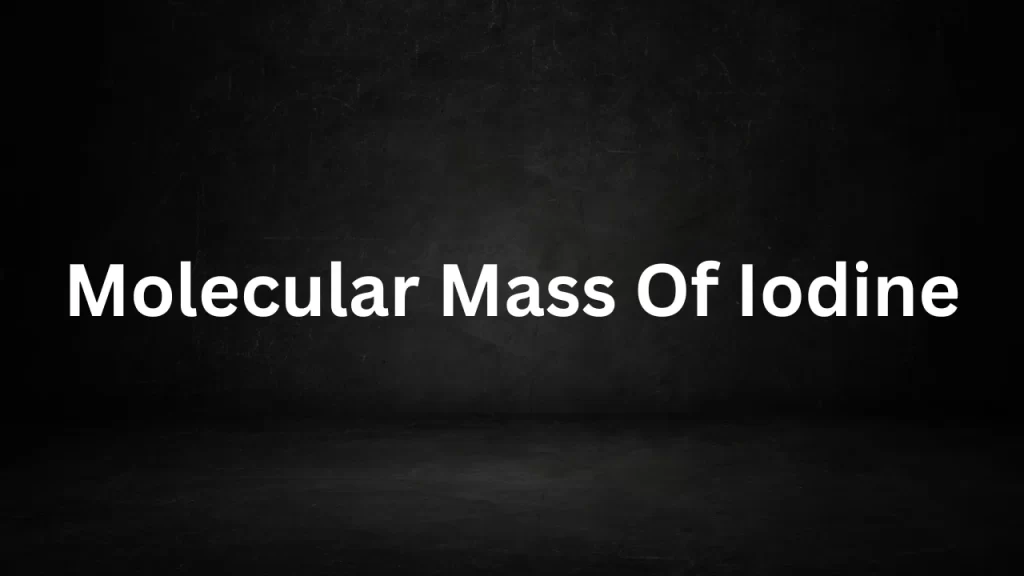Month: October 2023
Gaseous state class 11
Gaseous state class 11: In the realm of chemistry, the study of matter in different states is essential to understanding its behavior and properties. One of these fundamental states of matter is the gaseous state.
In Class 11 chemistry, students embark on a journey to explore the characteristics, laws, and principles that govern gases. In this article, we will provide an overview of the gaseous state, its basic concepts, and its relevance to the Class 11 curriculum.

Gaseous state class 11
1. Defining the Gaseous State
The gaseous state is one of the three primary states of matter, alongside the solid and liquid states. In this state, substances exist as gases, which have the following key characteristics:
- Gases do not have a definite shape or volume and expand to fill their containers.
- The particles in gases are widely separated, and they move rapidly in random directions.
- Gases are compressible, meaning their volume can be reduced by increasing pressure.
- Gases are affected by changes in temperature, pressure, and volume.
2. Behavior of Gases
Understanding the behavior of gases is crucial when studying the gaseous state. The behavior of gases is described by several gas laws, including:
a. Boyle’s Law: This law states that the pressure of a gas is inversely proportional to its volume at constant temperature (P₁V₁ = P₂V₂).
b. Charles’s Law: According to this law, the volume of a gas is directly proportional to its absolute temperature at constant pressure (V₁/T₁ = V₂/T₂).
c. Avogadro’s Law: Avogadro’s law states that equal volumes of gases, at the same temperature and pressure, contain an equal number of molecules.
d. Ideal Gas Law: The ideal gas law combines Boyle’s, Charles’s, and Avogadro’s laws into one equation (PV = nRT), where P is pressure, V is volume, n is the number of moles, R is the universal gas constant, and T is temperature in Kelvin.
3. Deviations from Ideal Behavior
While the ideal gas law provides a useful framework for understanding gas behavior, real gases often deviate from ideal behavior at high pressures and low temperatures. These deviations are described by the van der Waals equation, which accounts for the finite size and intermolecular forces between gas particles.
4. Measurement of Gaseous Properties
In Class 11, students learn about the measurement of various properties of gases, including pressure, volume, temperature, and the number of moles. These measurements are essential for applying gas laws and solving problems related to the behavior of gases.
5. Kinetic Molecular Theory
The kinetic molecular theory is a fundamental concept in the study of gases. It postulates that gas particles are in constant motion and that the pressure exerted by a gas results from the collisions of these particles with the walls of their container. The kinetic molecular theory helps explain the behavior of gases under different conditions.
6. Real-World Applications
The study of the gaseous state has numerous real-world applications. Some of these include:
- Understanding the behavior of gases in weather patterns and meteorology.
- Utilizing gas laws in chemical reactions, such as the production of industrial gases.
- Applying the principles of the gaseous state in the design of engines, like those in automobiles.
- Studying the behavior of gases in environmental science, such as air pollution and climate change.
Conclusion
The gaseous state is a fundamental aspect of chemistry covered in Class 11. It provides a foundation for understanding the behavior of gases, their properties, and their relevance in various scientific and industrial applications. Mastery of the gaseous state is not only important for academic success but also for gaining insights into the behavior of matter in our everyday lives. Students who delve into the study of gases in Class 11 are well-equipped to explore more advanced topics in chemistry as they progress in their education.
Read More
- Fajans Rule Class 11
- Plant Physiology Class 11
- Molecular Weight Of Ammonia
- Molar Mass Of Elements
- Molar Mass Of Zinc
Frequently Asked Questions (FAQs) On Gaseous state class 11
1. What is the gaseous state in chemistry?
The gaseous state is one of the primary states of matter, where substances exist as gases. Gases have no definite shape or volume and can fill the containers they occupy.
2. What are the main characteristics of gases?
Gases have several key characteristics, including the lack of a definite shape or volume, rapid random motion of particles, compressibility, and sensitivity to changes in temperature, pressure, and volume.
3. What is the importance of studying the gaseous state in Class 11 chemistry?
Understanding the gaseous state is crucial as it forms the basis for comprehending various gas laws and principles, which are fundamental in chemistry and have practical applications in many fields.
4. What are some of the fundamental gas laws covered in Class 11 chemistry?
Class 11 chemistry typically covers Boyle’s Law (pressure and volume relationship), Charles’s Law (volume and temperature relationship), Avogadro’s Law (volume and moles relationship), and the Ideal Gas Law (PV = nRT).
5. How does the Ideal Gas Law (PV = nRT) relate to the behavior of gases?
The Ideal Gas Law combines the relationships described by Boyle’s, Charles’s, and Avogadro’s laws into one equation. It allows us to predict and calculate the behavior of ideal gases under different conditions.
Molecular Weight Of MgSO4
Molecular Weight Of MgSO4: Molecular weight, also known as molecular mass or molar mass, is a fundamental concept in chemistry that allows scientists to quantify the mass of a molecule or compound relative to the unified atomic mass unit (amu).
In this detailed article, we will explore the molecular weight of magnesium sulfate, denoted as MgSO4. Magnesium sulfate is a versatile and essential compound with a wide range of applications in various fields, including medicine, agriculture, and industry. Understanding its molecular weight is crucial for precise calculations and applications.

Molecular Weight Of MgSO4
1. The Chemical Composition of Magnesium Sulfate
Before diving into the molecular weight of magnesium sulfate, it is essential to understand its chemical composition. The chemical formula for magnesium sulfate is MgSO4. This formula represents the relative proportions of each element within the compound:
- Magnesium (Mg) – One atom
- Sulfur (S) – One atom
- Oxygen (O) – Four atoms
This chemical formula provides us with the elemental composition of magnesium sulfate and serves as the foundation for calculating its molecular weight.
2. Atomic Structure of Magnesium, Sulfur, and Oxygen
To determine the molecular weight of magnesium sulfate, we must first examine the atomic masses of the constituent elements:
- Magnesium (Mg): Magnesium has an atomic number of 12 and an atomic mass of approximately 24.305 atomic mass units (amu). It is an essential element in biological systems and is known for its role in various enzymatic reactions.
- Sulfur (S): Sulfur possesses an atomic number of 16 and an atomic mass of roughly 32.06 amu. Sulfur is a non-metallic element that is vital for the formation of amino acids and proteins.
- Oxygen (O): Oxygen has an atomic number of 8 and an atomic mass of approximately 15.999 amu. It is a critical element for supporting combustion and is vital for respiration in living organisms.
3. Calculating the Molecular Weight of MgSO4
To determine the mole weight of magnesium sulfate (MgSO4), we add the atomic masses of each element present in the compound, taking into account their respective proportions as specified by the chemical formula:
Molecular Weight of MgSO4 = (Atomic Mass of Mg) + (Atomic Mass of S) + (4 x Atomic Mass of O)
The Molecular Weight of MgSO4 = (24.305 amu) + (32.06 amu) + (4 x 15.999 amu)
Molecular Weight of MgSO4 = 24.305 amu + 32.06 amu + 63.996 amu Molecular Weight of MgSO4 = 120.361 amu
So, the mole weight of magnesium sulfate (MgSO4) is approximately 120.361 atomic mass units (amu).
4. Significance of Molecular Weight
Understanding the mole weight of magnesium sulfate is significant for various reasons:
- a. Stoichiometry: Molecular weight plays a pivotal role in stoichiometric calculations, enabling chemists to determine the quantities of reactants and products in chemical reactions involving magnesium sulfate.
- b. Formulation and Manufacturing: Industries use magnesium sulfate in various formulations, such as fertilizers and pharmaceuticals. Knowledge of its molecular weight ensures accurate ingredient proportions.
- c. Analytical Chemistry: In analytical chemistry, the molecular weight is essential for identifying and quantifying magnesium sulfate in samples, facilitating quality control and research.
- d. Medicinal Applications: Magnesium sulfate is used in medical treatments, such as magnesium sulfate injections for conditions like preeclampsia. Precise dosing relies on understanding its molecular weight.
5. Applications of Magnesium Sulfate
Magnesium sulfate finds application in a wide range of industries and scientific disciplines:
- a. Medicine: Magnesium sulfate is used in medicine to treat conditions like eclampsia and preeclampsia in pregnant women. It is also utilized as a laxative and muscle relaxant.
- b. Agriculture: In agriculture, magnesium sulfate is a common fertilizer component. It provides essential magnesium and sulfur to plants, promoting healthy growth.
- c. Industry: Magnesium sulfate is employed in industries like textiles, paper manufacturing, and brewing. It helps in dyeing, pulp processing, and fermentation processes.
- d. Chemistry: Chemists use magnesium sulfate as a drying agent to remove water traces from organic solvents in laboratory experiments.
- e. Environmental Remediation: Magnesium sulfate can aid in reducing soil salinity and enhancing water quality by removing certain ions from water.
- f. Food and Beverage: It is used as a brewing salt in the production of beer and as a coagulant in tofu production.
Conclusion
The mole weight of magnesium sulfate (MgSO4), approximately 120.361 atomic mass units (amu), is a fundamental concept with widespread significance in chemistry, industry, medicine, and agriculture. It serves as a crucial parameter for stoichiometry, formulation, analytical chemistry, and medicinal applications. Magnesium sulfate’s versatility and essential properties make it an indispensable compound with a wide range of applications in our modern world. Understanding its molecular weight enables us to harness its potential effectively across various fields.
Read More
- Molecular Weight Of H3PO4
- Molecular Mass Of CaCl2
- Molecular Mass Of Mg
- Molecular Mass Of Iodine
- Molecular Mass Of Sugar
Frequently Asked Questions (FAQs) On Molecular Weight Of MgSO4
1. What is the molecular weight of magnesium sulfate (MgSO4)?
The mole weight of magnesium sulfate (MgSO4) is approximately 120.361 atomic mass units (amu).
2. How is the molecular weight of MgSO4 calculated?
The mole weight of MgSO4 is determined by adding the atomic masses of its constituent elements: magnesium (Mg), sulfur (S), and oxygen (O), according to their proportions in the chemical formula.
3. Why is knowing the molecular weight of magnesium sulfate important in chemistry?
Understanding the mole weight of MgSO4 is crucial for stoichiometry, which helps chemists calculate the quantities of reactants and products in chemical reactions involving magnesium sulfate.
4. Are the atomic masses used for calculating the molecular weight averages?
Yes, the atomic masses used are averages that consider the naturally occurring isotopes of each element—magnesium, sulfur, and oxygen.
5. What are the atomic masses of magnesium (Mg), sulfur (S), and oxygen (O)?
The atomic mass of magnesium is approximately 24.305 amu, sulfur is about 32.06 amu, and oxygen is around 15.999 amu.
Molecular Weight Of H3PO4
Molecular Weight Of H3PO4: Molecular weight, also known as molecular mass or molar mass, is a fundamental concept in chemistry that helps us understand the relative mass of molecules.
In this article, we will explore the mole weight of H3PO4, which is the chemical formula for phosphoric acid. Phosphoric acid is a vital compound with a wide range of applications in various industries, making it important to understand its molecular weight.

Molecular Weight Of H3PO4
The Chemical Formula of Phosphoric Acid
Phosphoric acid, represented by the chemical formula H3PO4, consists of three hydrogen (H) atoms, one phosphorus (P) atom, and four oxygen (O) atoms. The chemical formula provides information about the types and relative proportions of atoms within the molecule.
Atomic Structure of Hydrogen, Phosphorus, and Oxygen
To calculate the mole weight of H3PO4, we must first consider the atomic masses of its constituent elements:
- Hydrogen (H): Hydrogen has an atomic number of 1 and an atomic mass of approximately 1.008 atomic mass units (amu).
- Phosphorus (P): Phosphorus has an atomic number of 15, and its atomic mass is approximately 30.97376 amu.
- Oxygen (O): Oxygen has an atomic number of 8, and its atomic mass is approximately 15.999 amu.
Molecular Weight of H3PO4 (Phosphoric Acid)
- To calculate the mole weight of H3PO4, we add the atomic masses of each element present in the compound, taking into account their respective proportions:
- Molecular Weight of H3PO4 = (3 x Atomic Mass of H) + (1 x Atomic Mass of P) + (4 x Atomic Mass of O) Molecular Weight of H3PO4 = (3 x 1.008 amu) + (1 x 30.97376 amu) + (4 x 15.999 amu) Molecular Weight of H3PO4 = 3.024 amu + 30.97376 amu + 63.996 amu Molecular Weight of H3PO4 = 97.99376 amu
- So, the mole weight of H3PO4 (phosphoric acid) is approximately 97.99376 atomic mass units (amu).
Significance of Molecular Weight
- Understanding the mole weight of phosphoric acid is important in various scientific fields and industries, including:
- Chemistry: Molecular weight aids in stoichiometric calculations, allowing chemists to determine the amounts of reactants and products in chemical reactions involving phosphoric acid.
- Industry: Phosphoric acid is used in the production of fertilizers, food additives, and cleaning products. Knowing its molecular weight ensures accurate formulation.
- Analytical Chemistry: In analytical chemistry, molecular weight is essential for identifying and quantifying phosphoric acid in samples, enabling quality control and research.
- Pharmaceuticals: In the pharmaceutical industry, phosphoric acid finds application in drug formulation and pH adjustment. Precise dosing relies on a clear understanding of its molecular weight.
Conclusion
The mole weight of H3PO4 (phosphoric acid), approximately 97.99376 atomic mass units (amu), is a fundamental concept with broad implications in chemistry, industry, and research. It plays a crucial role in stoichiometry, formulation, and analytical chemistry, making it essential for the accurate use and study of phosphoric acid in various applications.
Read More
- Molecular Mass Of CaCl2
- Molecular Mass Of Mg
- Molecular Mass Of Iodine
- Molecular Mass Of Sugar
- Molecular Mass Of Copper
Frequently Asked Questions (FAQs) Molecular Weight Of H3PO4
1. What is the molecular weight of H3PO4 (phosphoric acid)?
The mole weight of H3PO4 is approximately 97.99376 atomic mass units (amu).
2. How is the molecular weight of H3PO4 calculated?
The mole weight of H3PO4 is determined by adding the atomic masses of its constituent elements: hydrogen (H), phosphorus (P), and oxygen (O), considering their respective proportions in the compound.
3. Why is knowing the molecular weight of phosphoric acid important in chemistry?
Understanding the mole weight of H3PO4 is crucial for stoichiometry, which helps chemists calculate the quantities of reactants and products in chemical reactions involving phosphoric acid.
4. Are the atomic masses used for calculating the molecular weight of H3PO4 averages?
Yes, the atomic masses used are averages that consider the naturally occurring isotopes of each element—hydrogen, phosphorus, and oxygen.
5. What are the atomic masses of hydrogen (H), phosphorus (P), and oxygen (O)?
The atomic mass of hydrogen is approximately 1.008 amu, phosphorus is about 30.97376 amu, and oxygen is around 15.999 amu.
Molecular Mass Of CaCl2
Molecular Mass Of CaCl2: Calcium chloride (CaCl2) is a chemical compound that plays a significant role in various industrial, scientific, and everyday applications. To understand its properties and behaviors in chemical reactions, it’s essential to explore its molecular mass.
In this article, we will delve into the world of calcium chloride’s molecular mass, its significance, and practical applications.

Molecular Mass Of CaCl2
The Chemical Formula of Calcium Chloride
Before discussing the molecular mass, let’s establish the chemical formula for calcium chloride. Calcium chloride is composed of one calcium (Ca) atom and two chlorine (Cl) atoms, making its chemical formula CaCl2. This formula indicates the relative proportions of each element in the compound.
Atomic Structure of Calcium and Chlorine
To understand calcium chloride’s molecular mass, we must account for the atomic masses of calcium (Ca) and chlorine (Cl). Calcium possesses an atomic number of 20 and an atomic mass of approximately 40.08 amu. Chlorine, having an atomic number of 17, has an atomic mass of around 35.45 amu. It’s important to note that these atomic masses are averages that consider the naturally occurring isotopes of each element.
Molecular Mass of Calcium Chloride (CaCl2)
To calculate the molecular mass of calcium chloride (CaCl2), we add the atomic masses of each element present in the compound:
Molecular Mass of CaCl2 = (Atomic Mass of Ca) + (2 x Atomic Mass of Cl) Molecular Mass of CaCl2 = (40.08 amu) + (2 x 35.45 amu) Molecular Mass of CaCl2 = 40.08 amu + 70.90 amu Molecular Mass of CaCl2 = 110.98 amu
So, the molecular mass of calcium chloride (CaCl2) is approximately 110.98 atomic mass units (amu).
Significance of Molecular Mass
Understanding the molecular mass of calcium chloride is essential for various reasons:
- Stoichiometry: Molecular mass plays a critical role in stoichiometric calculations, helping chemists determine the quantities of reactants and products in chemical reactions involving calcium chloride.
- Formulation and Manufacturing: Industries use calcium chloride in various formulations and manufacturing processes, where the precise measurement of its molecular mass ensures accurate ingredient proportions.
- Analytical Chemistry: In analytical chemistry, molecular mass is crucial for identifying and quantifying calcium chloride in samples, facilitating quality control and research.
- De-icing and Dust Control: Calcium chloride is widely used for de-icing roads and controlling dust on unpaved surfaces. Understanding its molecular mass is crucial for calculating the appropriate application rates.
Conclusion
The mole mass of calcium chloride, about 110.98 amu, is a fundamental and significant concept in the realms of chemistry and industry. and research. It facilitates accurate measurements in chemical reactions, quality control, and various applications where calcium chloride plays a pivotal role. A clear understanding of its molecular mass is essential for harnessing the compound’s diverse capabilities in our modern world.
Read More
- Molecular Mass Of Mg
- Molecular Mass Of Iodine
- Molecular Mass Of Sugar
- Molecular Mass Of Copper
- Molecular Mass Of Cl2
Frequently Asked Questions (FAQs) On Molecular Mass Of CaCl2
1. What is the molecular mass of calcium chloride (CaCl2)?
The mole mass of calcium chloride (CaCl2) is approximately 110.98 atomic mass units (amu).
2. How is the molecular mass of calcium chloride calculated?
The mole mass of CaCl2 is determined by adding the atomic masses of its constituent elements: calcium (Ca) and chlorine (Cl). For CaCl2, you add the atomic mass of Ca to two times the atomic mass of Cl.
3. Why is the molecular mass of calcium chloride important in chemistry?
The molecular mass is crucial for stoichiometry and helps chemists calculate the amounts of reactants and products in chemical reactions involving calcium chloride.
4. What are the atomic masses of calcium (Ca) and chlorine (Cl)?
The atomic mass of calcium (Ca) is approximately 40.08 amu, while the atomic mass of chlorine (Cl) is around 35.45 amu.
5. Are there any common uses of calcium chloride in everyday life?
Yes, calcium chloride is used for various purposes, including as a de-icing agent for roads in winter, a desiccant to absorb moisture, and in food processing, particularly in cheese making.
Molecular Mass Of Mg
Molecular Mass Of Mg: Molecular mass, often referred to as molecular weight, is a fundamental concept in chemistry that plays a crucial role in various scientific applications.
In this article, we will delve into the world of mole mass, with a specific focus on the mole mass of magnesium (Mg). Magnesium is a versatile and essential element with numerous applications in both nature and industry, making an understanding of its mole mass of significant importance.

Molecular Mass Of Mg
The Chemical Symbol for Magnesium
Before discussing its mole mass, it’s crucial to identify magnesium by its chemical symbol ‘Mg’ and its place on the periodic table. Magnesium is located in Group 2, Period 3, and is classified as an alkaline earth metal on the periodic table. It is the eighth most abundant element in the Earth’s crust and is vital for various biological and chemical processes.
Atomic Structure of Magnesium
To comprehend the mole mass of magnesium, it’s essential to first look at its atomic structure. Magnesium has an atomic number of 12, indicating it has 12 protons in its nucleus. The most common isotope of magnesium is Mg-24, which means it has 12 neutrons in its nucleus. The atomic mass of magnesium is approximately 24.305 atomic mass units (amu). This is the average mass of all naturally occurring isotopes of magnesium, taking into account their relative abundances.
Molecular Mass of Magnesium
The mole mass of an element is calculated by adding up the atomic masses of its constituent atoms. However, magnesium is rarely encountered in its molecular state in nature due to its metallic properties. Metals tend to form crystalline structures with closely packed atoms, not discrete molecules. In its natural state, magnesium exists as the diatomic molecule Mg2.
To calculate the mole mass of magnesium, we add the atomic masses of two magnesium atoms:
Molecular Mass of Mg2 = (Atomic Mass of Mg) x 2 Mole Mass of Mg2 = (24.305 amu) x 2 Molecular Mass of Mg2 = 48.61 amu
So, the mole mass of magnesium (Mg2) is approximately 48.61 atomic mass units (amu).
Significance of Molecular Mass
The mole mass of magnesium is important in various applications, including chemistry, physics, and biology. Here are some areas where understanding the mole mass of magnesium is crucial:
- Chemical Reactions: In chemical reactions involving magnesium or its compounds, the mole mass is utilized to ascertain the amounts of reactants and products. This data is essential for stoichiometry, a fundamental concept in chemistry that aids chemists in precisely establishing the quantities of substances required and generated during a reaction.
- Analytical Chemistry: Mole mass plays a crucial role in analytical techniques such as mass spectrometry, which helps identify and quantify compounds in a sample.
- Biological Processes: Magnesium is an essential element for living organisms, and its mole mass is significant in biological research and pharmaceuticals.
- Material Science: In the development of magnesium alloys for various applications, understanding the mole mass of magnesium aids in designing and engineering materials with specific properties.
Conclusion
The mole mass of magnesium, approximately 48.61 amu for the diatomic molecule Mg2, is a fundamental concept in chemistry and various scientific fields. It allows scientists and researchers to make precise calculations in chemical reactions, analytical chemistry, biology, and material science. Understanding the mole mass of magnesium is essential for harnessing its versatile properties and applications in the modern world.
Read More
- Molecular Mass Of Iodine
- Molecular Mass Of Sugar
- Molecular Mass Of Copper
- Molecular Mass Of Cl2
- Molecular Weight Of K
Frequently Asked Questions (FAQs) On Molecular Mass Of Mg
1. What is the molecular mass of magnesium?
The mole mass of magnesium is approximately 48.61 atomic mass units (amu) when considering its natural diatomic form, Mg2.
2. Why is the molecular mass of magnesium important?
The mole mass is important in chemistry and various scientific disciplines as it helps in stoichiometric calculations, analytical chemistry, and understanding the properties and behavior of magnesium in chemical reactions.
3. Can you provide an example of how the molecular mass of magnesium is used in chemistry?
Certainly! In a chemical reaction where magnesium (Mg) reacts with oxygen (O2) to form magnesium oxide (MgO), the mole mass of magnesium helps determine the amount of magnesium needed and the amount of magnesium oxide produced based on the stoichiometry of the reaction.
4. Are there any health-related implications of magnesium’s molecular mass?
Magnesium is an essential mineral for the human body, and its mole mass is significant in dietary and pharmaceutical contexts, as it affects the dosage and bioavailability of magnesium supplements and medications.
5. What are the practical applications of understanding the molecular mass of magnesium?
Understanding magnesium’s mole mass is vital in chemistry, analytical techniques (e.g., mass spectrometry), biology, and alloy development in materials science.
Molecular Mass Of Iodine
Molecular Mass Of Iodine: Molecular mass, also known as molar mass or molar weight, is a fundamental concept in chemistry. It is the mass of a substance expressed in atomic mass units (amu) or grams per mole (g/mol).
Iodine, a chemical element with the symbol “I” and atomic number 53, is a crucial element in various applications, including medicine, nutrition, and chemistry. Understanding the mole mass of iodine is essential for numerous scientific and industrial purposes.

Molecular Mass Of Iodine
Iodine: A Chemical Overview
Iodine is a halogen located in Group 17 (formerly Group VIIA) of the periodic table, alongside elements like chlorine, fluorine, and bromine. It is a relatively rare element in the Earth’s crust but plays a vital role in various biological processes. Iodine exists in several forms, including mole iodine (I2) and iodide ions (I^-).
Calculating the Molecular Mass of Iodine
Iodine’s molar mass can be determined by adding together the atomic masses of its component atoms. Iodine, in its most common form, exists as a diatomic molecule (I2). Each iodine molecule (I2) consists of two iodine atoms (I).
The atomic mass of iodine (I) is approximately 126.90447 atomic mass units (amu).
To calculate the mole mass of iodine (I2):
Molecular Mass of Iodine (I2) = Atomic Mass of Iodine (I) + Atomic Mass of Iodine (I) Molecular Mass of Iodine (I2) ≈ 126.90447 amu + 126.90447 amu ≈ 253.80894 amu
So, the mole mass of iodine (I2) is approximately 253.80894 atomic mass units (amu) or 253.80894 grams per mole (g/mol).
Significance of Iodine’s Molecular Mass
- Medicine and Health: Iodine is essential for the production of thyroid hormones, which regulate metabolism. Understanding its mole mass aids in medical applications, such as thyroid disease diagnosis and treatment.
- Chemistry: In chemical reactions and stoichiometry, the mole mass of iodine is crucial for determining reactant ratios and product yields.
- Nuclear Applications: Iodine is employed in the field of nuclear medicine, and its molecular mass is a factor in the formulation of radiopharmaceuticals.
- Nutrition: Iodine is an essential dietary mineral, and its molecular mass is relevant in nutritional assessments and dietary recommendations.
- Analytical Chemistry: Iodine compounds are employed in analytical methods such as titration, where precise measurement of mole mass is critical for standardization.
- Dye Industry: Iodine finds application in dye manufacturing, where its mole mass plays a role in formulating dye solutions.
Conclusion
The mole mass of iodine, approximately 253.80894 atomic mass units (amu) or 253.80894 grams per mole (g/mol) for the I2 molecule, is a crucial parameter in various scientific, medical, and industrial applications. Whether it’s influencing our health through thyroid hormone production or playing a role in chemical reactions and analytical techniques, iodine’s molecular mass is an essential aspect of its significance in our world. Understanding and applying this knowledge allows us to harness the properties of iodine for a wide range of beneficial purposes.
Read More
- Molecular Mass Of Sugar
- Molecular Mass Of Copper
- Molecular Mass Of Cl2
- Molecular Weight Of K
- Molecular Mass Of Iron
Frequently Asked Questions (FAQs) On Molecular Mass Of Iodine
1. What is the molecular mass of iodine (I2)?
The mole mass of iodine in its diatomic form (I2) is approximately 253.80894 atomic mass units (amu) or 253.80894 grams per mole (g/mol).
2. Why is the molecular mass of iodine important in chemistry?
Iodine’s mole mass is significant in chemical reactions and stoichiometry, allowing chemists to calculate reactant ratios and product yields accurately.
3. What role does iodine’s molecular mass play in medicine and health?
Iodine is essential for thyroid hormone production, and its mole mass is relevant in medical applications, including the diagnosis and treatment of thyroid diseases.
4. What industries utilize iodine, and how does its molecular mass come into play?
Iodine finds applications in diverse industries, such as nuclear medicine and dye production, where its molecular mass is taken into account in formulations and industrial processes.
5. Are there other forms of iodine, and do they have different molecular masses?
Iodine can exist in different forms, but the commonly referenced mole mass is for mole iodine (I2). Other forms may have distinct molecular masses.
Molecular Mass Of Sugar
Molecular Mass Of Sugar: Sugar, a sweet-tasting, crystalline substance, is a fundamental component of our diets and plays a crucial role in various culinary, industrial, and scientific applications.
Comprehending sugar’s molecular mass is indispensable in chemistry, food science, and various other disciplines necessitating precision in measurements and formulations. In this article, we will delve into the concept of the molecular mass of sugar, its significance, and its diverse applications.

Molecular Mass Of Sugar
The Nature of Sugar
Sugar is a generic term for a class of carbohydrates, with the most common forms being glucose, fructose, and sucrose. These sugars consist of carbon, hydrogen, and oxygen atoms and serve as a primary energy source for living organisms. Sugar extends beyond sweets like candies and desserts; it naturally occurs in fruits, vegetables, and a variety of other foods.
Calculating the Molecular Mass
To calculate the mole mass (also known as molar mass or molar weight) of sugar, we need to consider the atomic masses of its constituent elements: carbon (C), hydrogen (H), and oxygen (O). The molecular formula for glucose, one of the most common sugars, is C6H12O6.
Molecular Mass of Sugar (Glucose) = Sum of Atomic Masses of C, H, and O Atoms in the Formula
Molecular Mass of Sugar (Glucose) = (6 × Atomic Mass of Carbon) + (12 × Atomic Mass of Hydrogen) + (6 × Atomic Mass of Oxygen)
The atomic masses of carbon, hydrogen, and oxygen are approximately 12.01 amu, 1.01 amu, and 16.00 amu, respectively.
Molecular Mass of Sugar (Glucose) ≈ (6 × 12.01 amu) + (12 × 1.01 amu) + (6 × 16.00 amu)
Molecular Mass of Sugar (Glucose) ≈ 180.18 amu
So, the mole mass of glucose (sugar) is approximately 180.18 atomic mass units (amu) or 180.18 grams per mole (g/mol).
Significance of Sugar’s Molecular Mass
- Cooking and Baking: In culinary arts, the mole mass of sugar is crucial for precise measurements in recipes, affecting taste, texture, and overall quality.
- Chemical Reactions: Chemists use sugar’s mole mass when studying and analyzing chemical reactions involving sugars, such as fermentation and combustion.
- Food Labeling: The mole mass helps in determining the nutritional content of food products, including the sugar content listed on food labels.
- Industrial Processes: Sugar is a key ingredient in various industrial processes, such as brewing, distillation, and the production of biofuels.
- Pharmaceuticals: Sugar is used as an excipient in pharmaceutical formulations, and its mole mass is considered in drug development.
- Biotechnology: In biotechnology, sugar solutions are used as growth media for microorganisms in research and industrial applications.
Conclusion
Sugar’s molar mass, around 180.18 amu or 180.18 g/mol for glucose, is fundamental in chemistry, food science, and industries. Sugar’s molecular mass, whether sweetening desserts or advancing science, plays a crucial role in various facets of life. Precise measurements and comprehension empower us to create delectable recipes, investigate chemical reactions, and address diverse applications. In our journey for culinary excellence and scientific exploration, sugar’s molecular mass remains an essential component of its versatility.
Read More
- Molecular Mass Of Copper
- Molecular Mass Of Cl2
- Molecular Weight Of K
- Molecular Mass Of Iron
- Molecular Weight Of NH3
Frequently Asked Questions (FAQs) On Molecular Mass Of Sugar
1. What is the molecular mass of sugar?
The molecular mass of sugar varies depending on the specific type of sugar. For glucose, one of the common sugars, the molecular mass is approximately 180.18 atomic mass units (amu) or 180.18 grams per mole (g/mol).
2. Why is the molecular mass of sugar important in cooking and baking?
The mole mass of sugar is crucial in cooking and baking because it affects the taste, texture, and overall quality of baked goods. Precise measurements of sugar are essential for successful recipes.
3. How is the molecular mass of sugar relevant in chemical reactions?
Chemists use the mole mass of sugar when studying and analyzing chemical reactions involving sugars, such as fermentation and combustion. It helps in understanding the stoichiometry of these reactions.
4. In what ways is sugar’s molecular mass used in food labeling?
The mole mass of sugar is employed to ascertain the nutritional content of food products, including the sugar content stated on labels. It assists consumers in making informed dietary choices.
5. What role does sugar play in industrial processes, and how does its molecular mass come into play?
Sugar is a vital ingredient in various industrial processes like brewing, distillation, and biofuel production. Its molecular mass is factored into formulation and the optimization of processes in various industrial applications..
Molecular Mass Of Copper
Molecular Mass Of Copper: Copper, symbolized as Cu on the periodic table, is an essential element that has played a pivotal role in human history and continues to have a profound impact on various industries and technologies.
Comprehensive knowledge of copper’s molar mass holds critical significance in the domains of chemistry, metallurgy, and the myriad of applications employing copper. In this article, we will delve into the molecular mass of copper, its significance, and its diverse applications.

Molecular Mass Of Copper
The Nature of Copper
Copper is a versatile transition metal with atomic number 29. Copper is celebrated for its unmistakable reddish-brown appearance and exceptional electrical as well as thermal conductivity. Its historical utilization dates back thousands of years to ancient civilizations such as the Egyptians and Romans. Its malleability, ductility, and resistance to corrosion make it an ideal material for various applications.
Calculating the Molecular Mass
To calculate the mole mass (also known as molar mass or atomic weight) of copper (Cu), we consider the atomic mass of a copper atom. The atomic mass of copper is approximately 63.546 atomic mass units (amu).
Molecular Mass of Copper = Atomic Mass of Cu Molecular Mass of Copper ≈ 63.546 amu
Therefore, the molar mass of copper is approximately 63.546 atomic mass units (amu) or 63.546 grams per mole (g/mol).
Significance of Copper’s Molecular Mass
- Metallurgy: In the field of metallurgy, copper’s molar mass is of paramount importance, as it is refined and combined with other metals to produce diverse materials, including bronze and brass.
- Electrical Conductivity: Copper is famous for its outstanding electrical conductivity. Its molecular mass plays a role in engineering calculations for electrical components and wiring.
- Industrial Applications: Copper finds application in a multitude of industrial uses, including heat exchangers, piping systems, and electrical equipment. Its molecular mass is relevant in material selection and engineering designs.
- Coinage: Copper has a historical presence in coinage. Its molecular mass contributes to the standardization and value determination of coins.
- Health: Copper is an essential dietary mineral for humans. When conducting nutritional assessments and creating dietary guidelines, copper’s molecular mass is a relevant factor to consider.
- Art and Architecture: Copper is celebrated for its aesthetic attributes and has graced artwork and architectural designs for centuries.
- Antimicrobial Properties: Copper and its alloys exhibit natural antimicrobial properties, making them valuable in healthcare settings.
Conclusion
Copper, with its mole mass of approximately 63.546 atomic mass units (amu), holds a vital place in human civilization and modern technology. From electrical wiring to artistic creations, copper’s versatility and unique properties continue to shape our world. Understanding its molecular mass is fundamental in various scientific and industrial applications, ensuring its effective and responsible use across different domains. As we progress into the future, copper continues to symbolize progress, innovation, and cultural significance, enriching both our historical heritage and our future endeavors.
Read More
- Molecular Mass Of Cl2
- Molecular Weight Of K
- Molecular Mass Of Iron
- Molecular Weight Of NH3
- Molecular Mass Of Methane
Frequently Asked Questions (FAQs) On Molecular Mass Of Copper
1. What is the molecular mass of copper (Cu)?
The mole mass of copper (Cu) is approximately 63.546 atomic mass units (amu) or 63.546 grams per mole (g/mol).
2. Why is the molecular mass of copper significant in metallurgy?
The molar mass of copper is pivotal in metallurgical processes, particularly when crafting alloys like bronze and brass with other metals.
3. How does copper’s molecular mass impact its electrical conductivity?
Copper is renowned for its outstanding electrical conductivity, and its molecular mass is significant in engineering calculations related to electrical components and wiring.
4. What are the common industrial applications of copper, and how does its molecular mass come into play in these applications?
Copper finds extensive application in various industrial sectors, including the manufacturing of heat exchangers and electrical equipment. Its molecular mass is significant in material selection and engineering designs.
5. Copper has a rich history of use in coinage, and its molecular mass is relevant in the context of coin standardization and value determination.
Indeed, copper has a historical role in coinage. Its molecular mass is taken into account when standardizing and determining the values of coins.
Molecular Mass Of Cl2
Molecular Mass Of Cl2: Chlorine gas, represented as Cl2, is a diatomic molecule composed of two chlorine (Cl) atoms covalently bonded together.
Understanding the mole mass of Cl2 is fundamental in various scientific, industrial, and environmental applications. In this article, we will explore the mole mass of Cl2, its composition, and its relevance in different fields.

Molecular Mass Of Cl2
The Composition of Chlorine Gas
Chlorine gas (Cl2) consists of two chlorine (Cl) atoms bonded together. Chlorine gas is a gas that appears pale greenish-yellow and has a distinctive, pungent odor. It is widely employed across various industries, including water treatment, disinfection, and chemical synthesis, among others.
Calculating the Molecular Mass
To calculate the mole mass of Cl2, we need to consider the atomic masses of chlorine (Cl). The atomic mass of chlorine (Cl) is approximately 35.453 atomic mass units (amu).
The molar mass, also known as molar weight, of Cl2 is determined by summing the atomic masses of its constituent elements.
Molecular Mass of Cl2 = 2 × Atomic Mass of Cl Molecular Mass of Cl2 = 2 × 35.453 amu Molecular Mass of Cl2 ≈ 70.906 amu
Therefore, the molar mass of chlorine gas (Cl2) is approximately 70.906 atomic mass units (amu) or 70.906 grams per mole (g/mol).
Significance of Cl2’s Molecular Mass
- Water Treatment: Chlorine gas is commonly used to disinfect water in municipal water treatment facilities. Its molecular mass is essential in calculating the required dosage for effective disinfection.
- Chemical Synthesis: Chlorine gas finds application in manufacturing various chemicals, including PVC (polyvinyl chloride), pesticides, and solvents production. Its molecular mass is crucial in reaction stoichiometry.
- Environmental Monitoring: Monitoring chlorine gas emissions in industrial processes and understanding its molecular mass are essential for assessing and controlling environmental impact.
- Healthcare: Chlorine gas exposure can be harmful to human health. The assessment of health risks related to exposure and the development of safety measures take into account its molecular mass.
- Material Compatibility: Understanding the mole mass of Cl2 is important in materials science to assess the compatibility and resistance of materials used in chlorine-handling equipment.
Conclusion
Chlorine gas, with its mole mass of approximately 70.906 atomic mass units (amu), is a versatile chemical compound with a wide range of applications in water treatment, chemical synthesis, and various industries. Although it serves as a valuable tool for disinfection and chemical processes, it also presents challenges concerning safety and environmental impact.. As we continue to rely on chlorine gas for various purposes, understanding its molecular mass remains a fundamental aspect of its safe and effective use in scientific, industrial, and environmental contexts.
Read More
- Molecular Weight Of K
- Molecular Mass Of Iron
- Molecular Weight Of NH3
- Molecular Mass Of Methane
- Molecular Mass Of N2
Frequently Asked Questions (FAQs) On Molecular Mass Of Cl2
1. What is Cl2, and why is its molecular mass important?
Cl2 is chlorine gas, composed of two chlorine (Cl) atoms. Its mole mass is crucial in various scientific, industrial, and environmental applications.
2. How does the molecular mass of Cl2 relate to environmental monitoring?
Understanding the molecular mass of Cl2 is crucial for monitoring emissions in industrial processes and assessing its environmental impact.
3. What are the health implications of chlorine gas exposure, and how does its molecular mass factor in?
Exposure to chlorine gas poses health risks, and its molar mass is a vital factor to consider when assessing these hazards and implementing safety measures.
4. Why is the molecular mass of Cl2 important in materials science?
In materials science, the molar mass of Cl2 is employed to assess the compatibility and longevity of materials employed in equipment intended for chlorine handling.
5. Are there particular analytical techniques that utilize the molar mass of Cl2?
Indeed, the molar mass of Cl2 plays a role in various analytical methods, including mass spectrometry, which aids in identifying and quantifying chlorine-containing compounds within samples.
Molecular Weight Of K
Molecular Weight Of K: Potassium, a chemical element denoted by the symbol K and atomic number 19, is an essential component of the periodic table.
Understanding the molecular weight of potassium is fundamental to various scientific disciplines, from chemistry to biology. In this article, we will explore the molecular weight of potassium, its significance, and its role in different domains.

Molecular Weight Of K
The Nature of Potassium
Potassium (K) is an alkali metal found in Group 1 of the periodic table. It is highly reactive and exhibits notable properties, including its ability to conduct electricity and participate in various chemical reactions. Potassium is vital for the functioning of living organisms and is an essential nutrient in human diets.
Calculating the Molecular Mass
The molecular mass, also known as molar mass or atomic weight, of an element is equivalent to its atomic mass. The atomic mass of potassium (K) is approximately 39.0983 atomic mass units (amu).
Significance of Potassium’s Molecular Mass
- Nutrition: Potassium is a critical dietary mineral required for various physiological functions in the human body, including nerve transmission, muscle contractions, and maintaining proper fluid balance. Its molecular mass is significant in nutritional assessments.
- Agriculture: Potassium plays a crucial role in plant growth and development. The molecular mass of potassium is important in formulating potassium-based fertilizers used to enhance crop yields and quality.
- Chemical Reactions: In chemistry, the molecular mass of potassium is essential for stoichiometry and reaction calculations, particularly in determining the reactant ratios and product yields in chemical processes.
- Medicine: Potassium ions are vital for maintaining heart rhythm and other bodily functions. Knowledge of potassium’s molecular mass is essential in medical diagnostics and treatments for conditions related to potassium imbalances.
- Industrial Applications: Potassium compounds are used in various industrial processes, such as glass and soap production. The molecular mass is relevant in quality control and manufacturing procedures.
- Geology and Earth Sciences: Potassium is used in radiometric dating techniques to estimate the age of rocks and minerals. Its molecular mass contributes to the accuracy of these dating methods.
Conclusion
Potassium, with its molecular mass of approximately 39.0983 atomic mass units (amu), holds a significant place in the realms of chemistry, biology, nutrition, and agriculture. Its unique properties and crucial roles in living organisms and industrial processes make it an indispensable element in our daily lives and scientific endeavors. As we continue to explore the intricacies of nature and utilize potassium’s properties for various applications, its molecular mass remains a fundamental parameter in our understanding of the natural world and our technological advancements.
Read More
- Molecular Mass Of Iron
- Molecular Weight Of NH3
- Molecular Mass Of Methane
- Molecular Mass Of N2
- Molar Mass Of I
Frequently Asked Questions (FAQs) On Molecular Weight Of K
1. What is the molecular weight of potassium (K)?
The molecular weight of potassium (K) is approximately 39.0983 atomic mass units (amu) or 39.0983 grams per mole (g/mol).
2. Why is the molecular weight of potassium significant in nutrition?
Potassium is an essential nutrient in human diets, and its molecular weight is relevant in nutritional assessments and dietary recommendations.
3. How does potassium’s molecular weight impact plant growth and agriculture?
Potassium is crucial for plant growth, and its molecular weight influences the formulation of potassium-based fertilizers used to improve crop yields and quality.
4. In what way is potassium’s molecular mass used in chemical reactions?
In chemistry, potassium’s molecular mass is essential for stoichiometry and reaction calculations. It helps determine reactant ratios and product yields in chemical processes.
5. What role does potassium’s molecular weight play in medical diagnostics and treatments?
Potassium ions are vital for maintaining bodily functions, and knowledge of potassium’s molecular mass is important in medical assessments and treatments for conditions related to potassium imbalances.